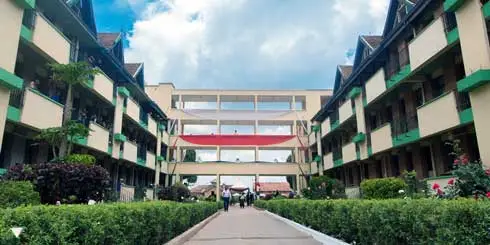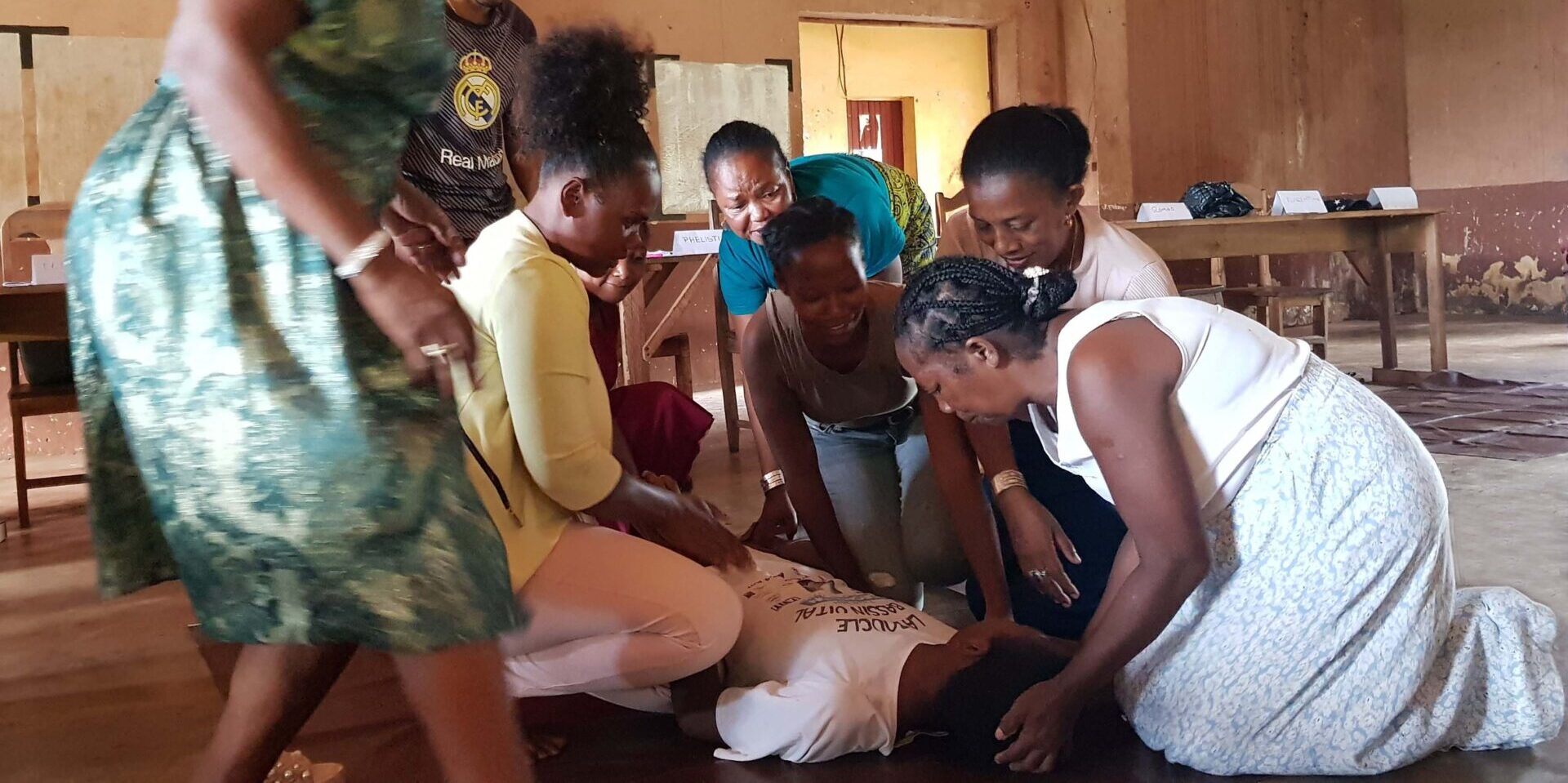In this blog, I’ll explain how Malagasy people generally perceive illness and why AiNA soa exists.
In general, people decide to train because they don’t know. This is confirmed by the knowledge assessment we carry out before each training course. In 2024, when participants give you answers that date back to the beginning of the last century, all you can do is take a minute’s silence. Then you realize that the hours ahead won’t be easy.
A little anecdote that pointed me in the right direction
My name is Tsito, I’m a doctor and first aid instructor at AiNA soa. About ten years ago, as part of my doctoral thesis in the rheumatology department of one of Madagascar’s largest hospitals, I conducted research into how patients suffering from chronic illnesses perceive their illness. I wanted to focus my career on therapeutic patient education. I was moved by the story of a man whose wife suffered from a particular form of systemic lupus erythematosus (SLE), an autoimmune disease, which deformed her face into a mosaic. This man cried in front of me in the hospital corridor, he was desperate. But he approached me because he had a question: “Doctor, I come from a remote village where my wife was by far the most beautiful. All the men wanted her, but she chose me. Was she struck by a curse? Had she been bewitched? From that moment on, I wanted to know how and why patients went so far as to imagine a mystical dimension to their illness, because this wasn’t the first case.

Pictures 1: University Hospital JRB, Antananarivo.
Traditional conception of illness in Madagascar
Before the 20th century, the Malagasy certainly had only an empirical knowledge of physiology and the functioning of organs.
For them, the soul that makes up the human being, along with the body and the spirit, can be removed by evil spirits or spells, leading to illness and death. All diseases would therefore be produced by malevolent beings from our dimension or from an invisible dimension.
The therapeutic principles of the Malagasy consisted in preventing the soul from leaving the body, or bringing it back, or detaching the body from the grip of evil forces. The Malagasy treated diseases using elements from the three kingdoms (plant, animal, and mineral), accompanied by special rites prescribed by a particular healer. The principle behind using products as impure as they are strange is the conviction that the best remedy is the one that can inspire the most horror.
Extracts from a 1901 medical thesis (Ramisiray Gershon. Pratiques et croyances médicales des Malgaches [Thèse]. Antananarivo : s.n., 1901).
- Fractures are always caused by witchcraft and evil spells. Healers indicate what to do and what to avoid. For treatment, a bravado based on animal bones is administered, especially those of animals that never fracture.
- For dislocations and sprains, rat excrement is used.
- For severe burns, the author has listed the practices in the following order: a layer of grease over the burn, or women’s smegma as an ointment, or washing with salt water.
- For wounds, spider webs are used, or the chewed leaves of a specific plant are applied.
- For foot injuries, the practice was to urinate on them.
- In case of hemorrhage, our ancestors would take a burning firebrand and bring it as close as possible to the gaping wound.
- In case of insect bite or sting, snot was applied.
- Some illnesses are classified as “diabolical”, notably epilepsy. The Malagasy believe that it’s a contagious disease transmitted by saliva. So, to avoid contagion, those present, while keeping a respectable distance, throw green grass or the small crown that women use to carry burdens onto the sick person. To prevent convulsive seizures, the Malagasy burn together a crow feather and a piece of a special wood, and make the patient drink the ashes (with water).
Modern concept of illness
Nowadays, while most patients attribute their illness to a dysfunction of the body explained by science, divine will and witchcraft are still incriminated.
Several factors determine the individual’s perception of illness: culture, religion, level of education and socio-professional status, as well as the environment, i.e. history and politics.
In Madagascar, use of empirical therapies dispensed by a healer as a first-line treatment is still common. This is due to the difficulty of geographical and financial access to medical care. The distance from a health center considerably modifies the profile of patients, their perception of illness and the choice of treatment.
Preconceived ideas and distortions of past practices
In 2024, while almost everyone is using the internet, artificial intelligence is becoming increasingly sophisticated and sharing and access to knowledge is improving all the time, people do not seem to have completely changed their behaviour in the event of illness.
1. On social media, in a group for young parents, you can read in case of:
- Burn: Urinate on it, or use toothpaste, saliva, flour, grated potato, etc.

Pictures 2: burned leg – where flour was applied.

Pictures 3: burned leg – where toothpast was applied
- Seizure: Burn a chameleon and drink the ashes (with water) or give the child coffee (if the victim is a child)
- Insect bite or sting: apply women’s smegma as an ointment.
- Dislocations and sprains: eat cat or nymph.
2. In our training session, we often get these same answers from participants.
- Fresh chicken blood for hemorrhage
- Saliva for burn
- Throw green grass at a seizure victim
- Turn the person upside down in the case of drowning
As mentioned earlier, in the first aid training AiNA soa conducts, when we are told ideas related to mysticism or culture, we ought to double our efforts. This emphasizes the importance of education and awareness to correct these dangerous beliefs. Indeed, we must communicate without risking creating a cultural incident in the middle of a training session. Our strategy will be to provide clear information on the specific cases we are teaching, to give a simple but precise answer and above all to make the learner understand why we do so or so. This last part has allowed AiNA soa to distinguish itself from other first aid training providers.
In conclusion, AiNA soa is working hard to update and correct people’s first aid practices. We are organizing free first aid training sessions in remote areas, reaching more people through television broadcasts, and many projects are still being developed for other target groups, including children. All to make a greater impact in our society.
Greetings from Madagaskar!
Tsito, doctor and First-Aid-Instructor
